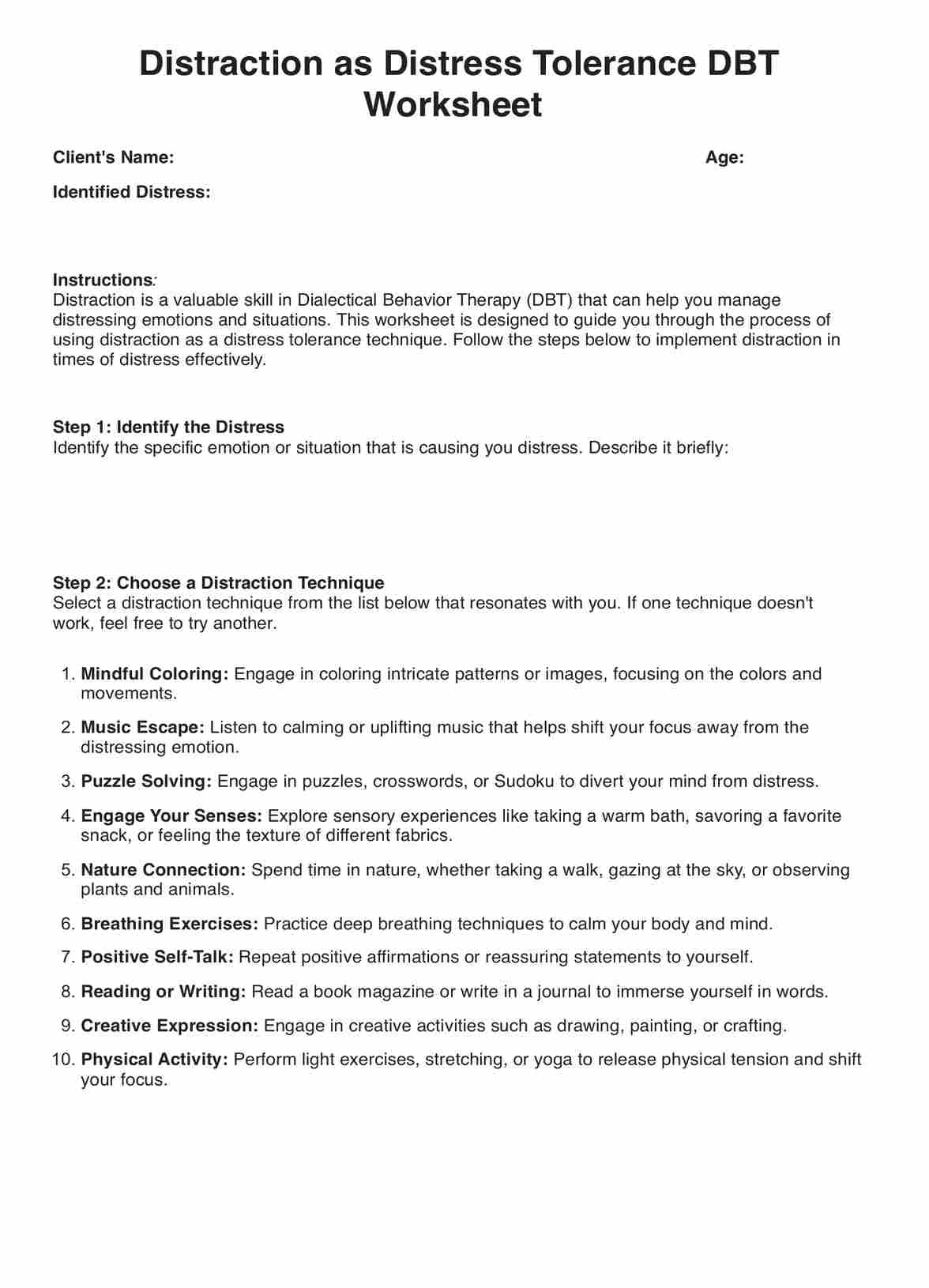The time it takes to complete the Distraction as Distress Tolerance DBT Worksheet depends on the individual's pace, engagement, and knowledge of the procedures. On average, it may take 20 to 30 minutes to engage with the worksheet's exercises and reflections properly.

Distraction as Distress Tolerance DBT Worksheet
Cope with distress through effective techniques with the Distraction as Distress Tolerance DBT Worksheet. Download a free PDF and embark on your journey.
Distraction as Distress Tolerance DBT Worksheet Template
Commonly asked questions
The Distraction as Distress Tolerance DBT Worksheet empowers individuals to manage distress effectively. Teaching practical techniques and encouraging mindfulness assists in redirecting attention from overwhelming emotions. This promotes emotional regulation, reduces impulsive reactions, and equips individuals with tools to navigate challenging situations with resilience and composure.
The Distraction as Distress Tolerance DBT Worksheet is best used in moments of distress, anxiety, or emotional overwhelm. It is a valuable resource during high-stress situations when facing triggers, combating impulsive reactions, managing anxiety or panic, and seeking alternatives to harmful behaviors. It aids in cultivating healthier coping strategies.
EHR and practice management software
Get started for free
*No credit card required
Free
$0/usd
Unlimited clients
Telehealth
1GB of storage
Client portal text
Automated billing and online payments











